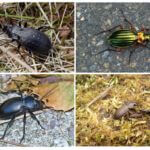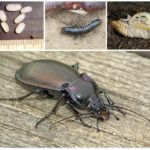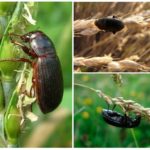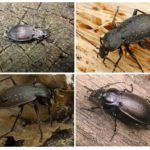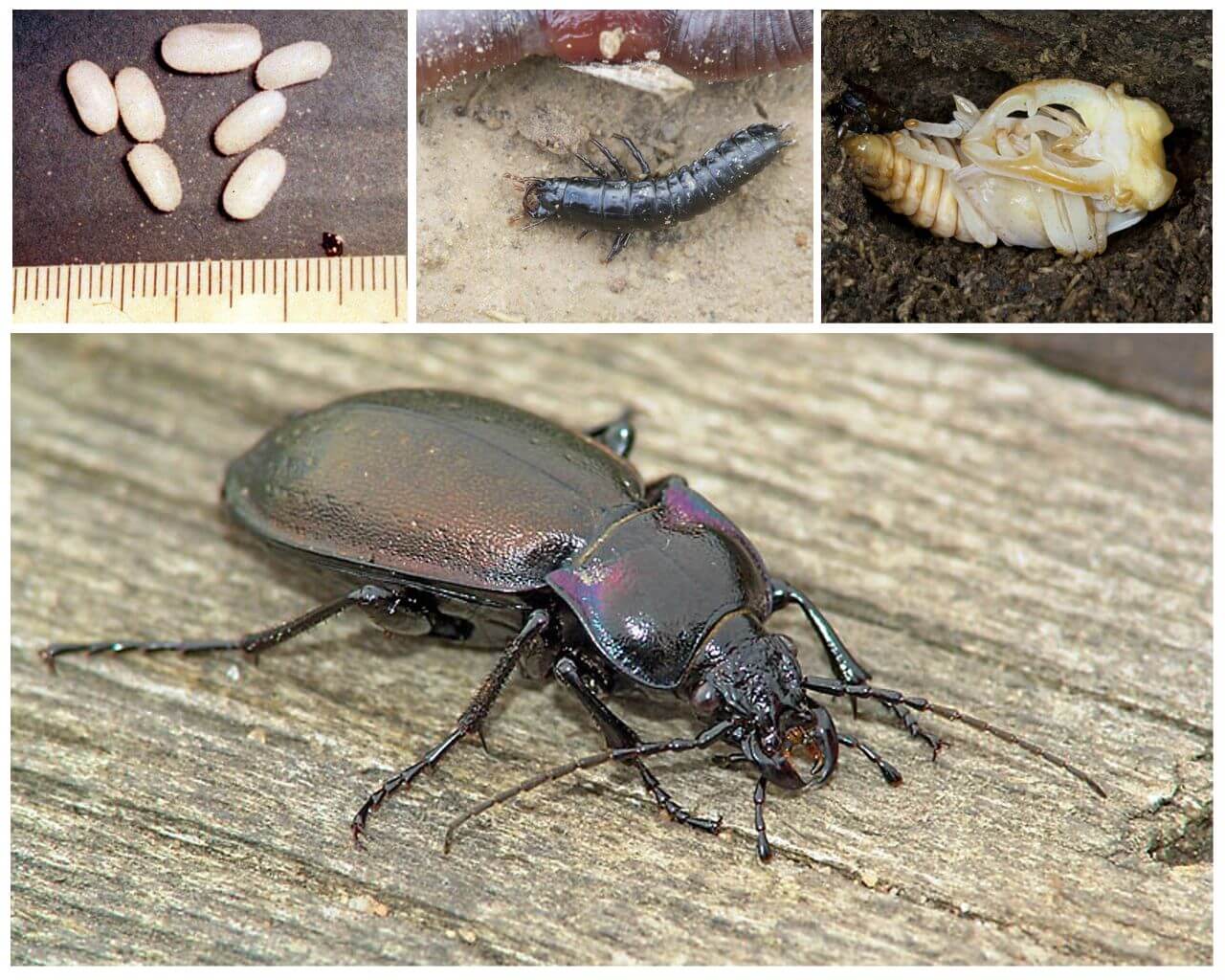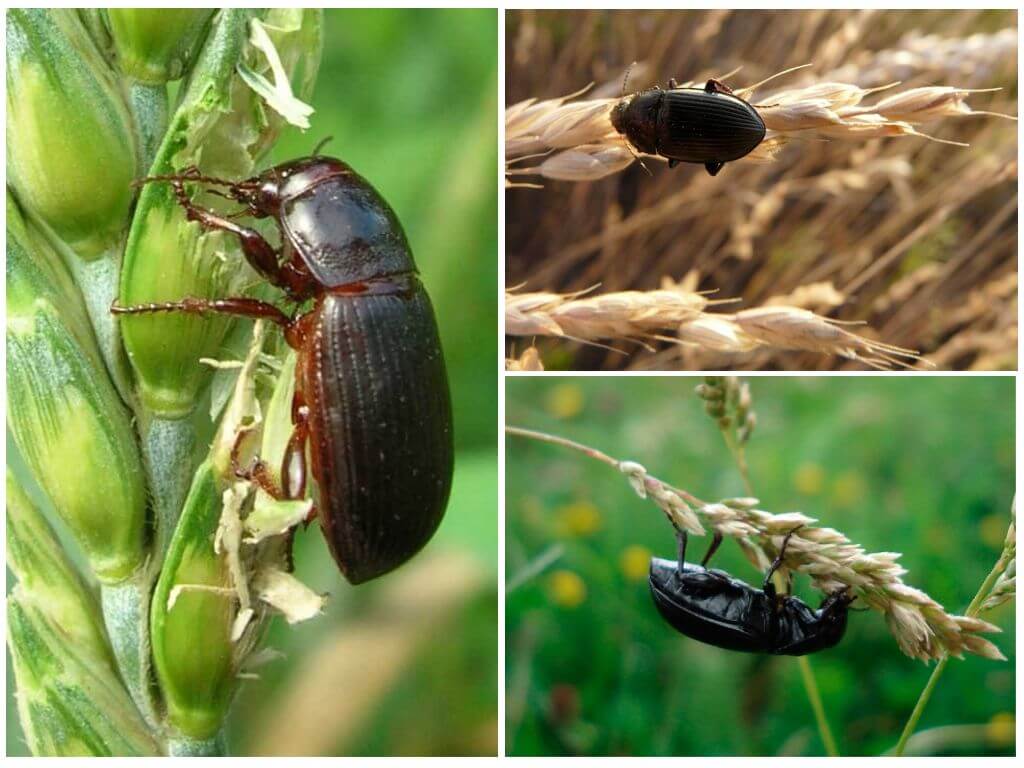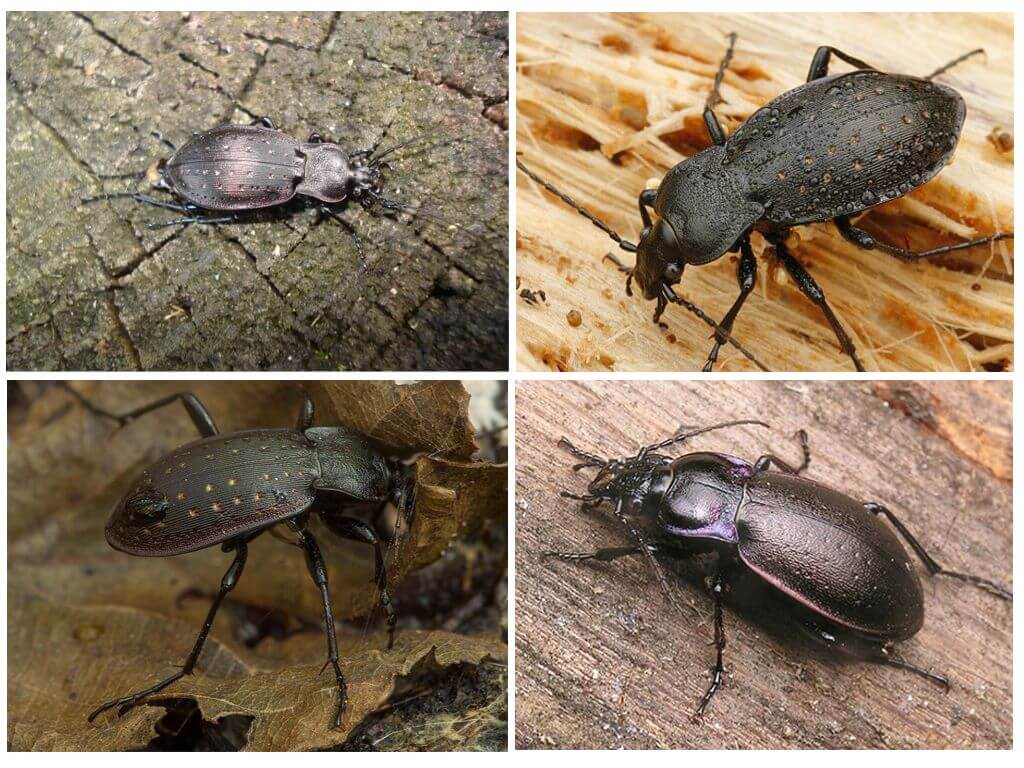Description and photo of ground beetles
Content
- Varieties of ground beetles
- Reproduction and development of the beetle
- Grain ground beetle
- Garden ground beetle
Ground beetles of the subfamily Carabinae are found almost everywhere. Today, science knows about 50,000 species of these insects. Ground beetles of the genus Ceroglossus inhabit the Chilean-Patagonian region, representatives of the genus Aplothorax inhabit St. Helena, and individuals belonging to the genus Pamborini are found in New Zealand. From this article you can find out what the ground beetle looks like; the photo is presented below, what kind of lifestyle it leads and in what conditions it prefers to dwell.
General features
About 3,000 species of Carabinae beetles inhabit the territory of Russia, differing in size, appearance and even developmental features. Read more about how the ground beetle looks.
Appearance
The ground beetle beetle is a fairly long insect whose body size can reach up to 8 cm, there are crumbs up to 4 mm, individuals of medium size grow up to 3 cm. Most often there are beetles with a dark color with a shiny metallic tint created by the smallest transverse lines. There are also individuals of red, red and green tones.
The segmented body shape is the main feature of all ground beetles. Sometimes this rule is violated:
- homophrons - are owners of very wide bodies, distinguished by a bulge;
- individuals of the genus Demetrius, Drypta or Odacantha have an elongated stem body;
- racers have long and thin legs;
- scarites - digging individuals have a constriction that separates the front and rear parts of the body.
Most species of this family fly very poorly, using a similar method of moving only for purposes of settlement. In such specimens, dense elytra cover the abdominal section almost completely. For some types of sensations of floating in the air is completely unknown. They have either elytra or are absent or underdeveloped, as a result of which they grow together.In connection with the loss of flight or its weakening, the beetles have well-developed limbs, adapted for walking and running.
Interesting!
Females differ from males in narrowed segments. Thicker they are at digging representatives. There is even a tenderloin on the front leg, which serves as a mustache cleaning organ. Thanks to the claw segment, the beetle is able to attach to the substrate or to clasp the plant.
Lifestyle
Some species of ground beetle are located in the ground, there are those that can live on trees or shrubs.
In most of the representatives of this family are nocturnal, going in search of food.
On a note!
The presence of powerful and strong limbs allows them to overcome considerable distances, because of what beetles are called runners or fast walkers.
Nutrition
The insects of the Carabinae family are different in nutrition. What do ground beetles eat?
- phytophagous - beetles feeding on plants;
- entomophages are predators that feed on slugs, snails, earthworms, caterpillars, beetles and their larvae;
- Mixofagi - mixed type of ground beetles, which feed on plant and animal food.
Breeding
Ground beetles live by the standards of insects for a relatively long time — at least three years. To become an adult, the future individual undergoes several stages: the egg, the larva, the pupa and the imago.
In one clutch contains more than fifty eggs, which the female lays in fertile soil. After two weeks, the larvae have 6 clawed legs. After 10 hours, their white surface acquires a purple-black color. After two days, the larvae become small predators, becoming owners of relatively powerful jaws. By the end of the summer, they pupate and in three weeks form into young ground beetles.
About pests
Some species of ground beetle are pests. Damaging cultural plantings, they pose a serious threat to vegetable gardens and agricultural holdings. So it can be attributed to the malicious group bread ground beetle – black tarfishwhose body length does not exceed 1.5 cm. Answering the question, what do ground beetles of this species eat, we note that their main delicacy is cereals.
On a note!
Giving preference to cereals, pests destroy huge areas of crops.They eat young leaves of winter crops, which prevents further growth of plants. Their favorite delicacy is nectar and pollen of flowers.
The larvae of beetles cause no less harm, feeding on the milk juice of young grain. Wheat, rye and barley fields are particularly affected by pests. They will not refuse corn and oats. Lack of cultivated plantings can be replaced even by leeks.
After mating, the females lay eggs (in one clutch there can be up to 250 pieces), which have a white color, a smooth surface and an oval shape. After three weeks, the larvae appear from them. They live in the upper layer of the soil, the food for them are the leaves of various cereals. In winter, the larvae go under the ground, most often for winter crops. By the middle of spring, they pupate, which takes about 20 days. After that they become sexually mature individuals.
About predators
Especially often on the territory of our country common, forest or as it is also called garden ground beetle, the description of which is slightly different from the previous individual:
- It is a mustache insect whose body length reaches up to 3 cm;
- the beetle has a dark graphite or brown color with a metallic sheen;
- in the flap area there are elongated grooves with golden inclusions.
The predatory insect is the owner of powerful sickle-shaped jaws and sufficiently developed legs, which allows it to move quickly in search of food. It is these features that distinguish beneficial insects from pests: they have shorter legs and not much protruding mandibles. And entomophages (useful bugs) are larger insects.
Beetles go on a hunt at night, during the day they try to hide in shelters under the bark of trees, fallen leaves or stones. Their victims can be various pests of the garden and vegetable garden: slugs, snails, caterpillars, as well as their larvae.
Having spotted a suitable prey, the predator attacks it, glaring at its jaws. After which the beetle injects a special liquid. Thanks to her, the tissue of prey dissolves, turning into a semi-liquid mass. In this form, the beetle and eats its prey.
Ground beetles larva - no less active predator, it can be said on the contrary, it has much more appetite. It has a wormlike appearance. Moves with the help of three pairs of very long thoracic legs.Young offspring lives in the upper layers of the soil, turning into full-fledged beetles by the autumn.
Adult individuals of any kind of predators live in the upper layer of the soil or on its surface. Insects are adapted to different conditions. The life span of this species of beetles is from 3 to 5 years. During this period, insects mate several times.
Given that one ground beetle insect during the summer destroys more than three hundred pests, the benefits brought by garden bugs are simply invaluable.
On a note!
Do not take the beetle with your hands, as it has a protective mechanism. The insect strikes its offender with a stream of caustic, specifically smelling liquid.
About mixed type beetles
Representatives of this group are no less numerous than the above-described species of ground beetle. These beetles eat and plant food and animal. A bright representative of the mixed type group is the millet ground beetle. In the absence of greenery, it feeds like a predator, as the grain crops grow, it becomes a phytophage.

